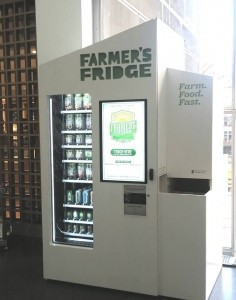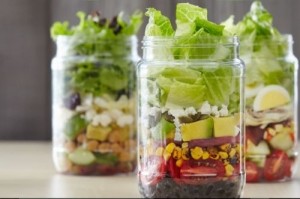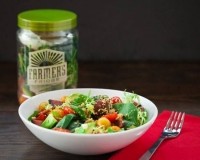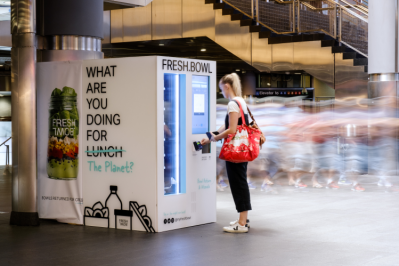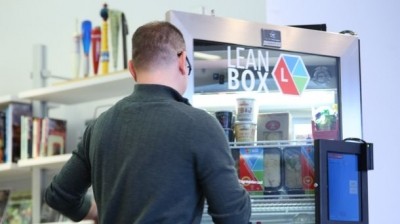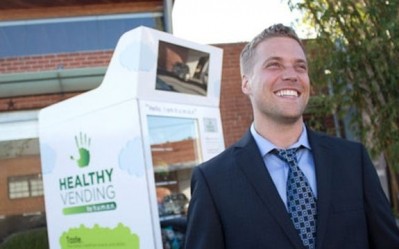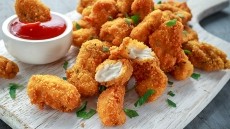Farmer’s Fridge CEO: ‘We won't stop until it’s easier to get a salad than a candy bar’
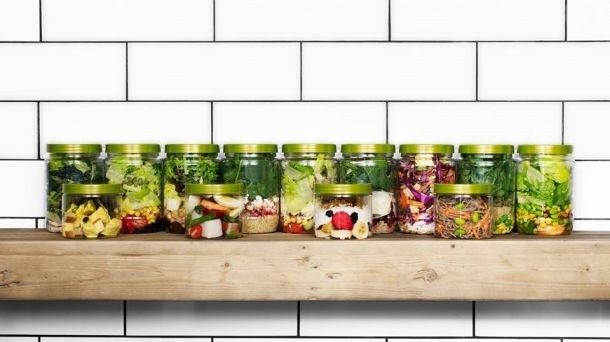
Speaking to FoodNavigator-USA after closing a funding round led by Danone Ventures, PowerPlant Ventures (co-founded by ZICO founder Mark Rampolla) and Cleveland Avenue, an investment firm founded by former McDonald's CEO Don Thompson, Saunders acknowledges that his business model – which you can paraphrase as do everything yourself – is not for the faint-hearted.
From the start, Farmer’s Fridge prepared all of its salads and breakfasts, designed and owned all of its machines and software, and replenished its own fridges, which generated some sizeable upfront costs, but meant the company was in complete control from the outset, said Saunders.
“From the beginning to the end of the cycle we control everything, including the consumer experience. The fridges run on a cloud-based network and we get an order every day, produce to order and deliver overnight based on exactly what is needed for each fridge. The fridges all run on algorithms that match the historical demand and the probability of selling an item day by day, so the menu can change in a given location on a daily basis.
“We have single digit waste numbers and donate food that hasn’t sold via a partnership with Zero Percent. Food scraps and salads that cannot be donated due to expiration are composted, our salad jars, napkins, and utensils are recyclable and we also provide on-site jar recycling at our fridges.”
There were 10 or 15 other food options right there and people were choosing to buy their lunch from an automated fridge
He added: “I put all of my own savings into the first few machines – and took out a lot of credit cards – but I was always convinced this was the right business model. I remember getting up at 3.30am and driving to the produce warehouse to pick up our produce as we were too small to get a delivery, and we [Saunders and a couple of prep cooks] started chopping everything up in a shared kitchen.
“At the beginning, when you tell people about a new business idea, most people by default will think it’s not a great idea, but when I saw people buying salads from our first machine – which was in the middle of a food court – I knew I was onto something, because I’d always felt that we needed to pick up QSR customers in order to be successful.
“There were 10 or 15 other food options right there and people were choosing to buy their lunch from an automated fridge.”
From the beginning our unit economics made sense
Just over three years later, Farmer’s Fridge has 75 locations and another 200 in development, employs 60 staff – including some high-profile hires from Mars, Kraft, Tyson and Starbucks - and makes a profit, says Saunders.
“For me, the notion of things getting less expensive as you scale was never a concept I was that comfortable with. From the beginning we tried to have unit economics that made sense. So I always felt that growth capital should be spent on things like building out your team or facility upgrades. We also customize the range in each fridge according to the margins and what makes sense for the local customer base.
“The unit economics were sound from the very beginning, so while I see opportunities to save money as we grow, it’s not baked into our business model. In terms of capital efficiency we’re significantly more capital efficient than a restaurant.”
Hospitals, airports, train stations, museums, work places
So what locations work best for the company, which has fridges in a wide variety of locations? And how does the business model work?
According to Saunders: “Our location strategy is pretty diverse, so we’re in retail stores with our own POS, but we’re also in offices, hospitals, airports, train stations, museums, and colleges. The economics arrangements vary, so for offices we’re seen more as an amenity and sometimes subsidized by employers, whereas in retail, we’ll do a revenue share.”
The fact that consumers are even buying Farmer’s Fridge salads from Whole Foods stores – which have their own salad bars and packaged salads – is a testament to the quality and freshness of the product, meanwhile, says Saunders.
“It’s a big proof point for the business. We get to the customer faster. It’s not spending three days on the truck and three days on the shelf.”
Continuous improvement
As for the menu, it’s been “a process of continuous improvement,” says Saunders, who has expanded his range from salads in jars (eg. strawberry rhubarb, kale chicken caesar), to include breakfast items (almond butter oatmeal, Greek yogurt & granola, pineapple coconut chia pudding), prepared meals (salmon nicoise, soba noodles), snacks (eg. hardboiled eggs) and drinks.
“There are probably only two things today that were on the menu on the first day. The fridge has also changed completely. The first one was something like 30 square feet, covered in plants and made of reclaimed wood, whereas we’ve since distilled it down to its essential elements.”
A national concept
From a geographical perspective, Farmer’s Fridge is currently focused on going deep – rather than wide – and maximizing opportunities within the radius of its kitchen in the Fulton Market district, says Saunders.
“Right now we're looking at expanding the radius from the kitchen from 1.5 hours to about five hours over 2017, so we could hit most of the Midwest. The ambition is to make this a national concept with tens of thousands of locations.
"We don’t want to stop until it’s easier and more convenient to get a salad than a candy bar.”
